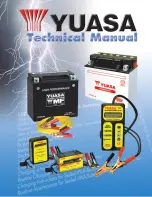
After selecting a proper child seat,
and a good position to install the seat,
there are three main steps in
installing the seat:
Make sure the child is properly
strapped in the child seat
according to the child seat maker’s
instructions. A child who is not
properly secured in a child seat
can be thrown out of the seat in a
crash and be seriously injured.
However, a child seat does not need
to be ‘‘rock solid.’’ In some vehicles
or seating positions, it may be
difficult to install a child seat so that
it does not move at all. Some side-to-
side or back-and-forth movement can
be expected and should not reduce
the child seat’s effectiveness.
When you are not using a child seat,
either remove it and store it in a safe
place, or make sure it is properly
secured. An unsecured child seat can
be thrown around the vehicle during
a crash or sudden stop and injure
someone.
If the child seat is not secure, try
installing it in a different seating
position, or use a different style of
child seat that can be firmly secured
in the desired seating position.
To provide security during normal
driving maneuvers as well as during
a collision, we recommend that
parents secure a child seat as firmly
as possible.
All child seats are
designed to be secured to the
vehicle with the lap part of a lap/
shoulder belt. Some child seats
can be secured to the vehicle’s
LATCH anchorage system instead.
A child whose seat is not properly
secured to the vehicle can be
endangered in a crash. See pages
,
and
for instructions on
how to properly secure child seats
in this vehicle.
After installing a child
seat, push and pull the seat
forward and from side to side to
verify that it is secure.
44
36
32
Installing a Child Seat
Secure the child in the child seat.
Storing a Child Seat
Properly secure the child seat to
the vehicle.
Make sure the child seat is f irmly
secured.
1.
2.
3.
Protecting Children
Driver and Passenger Saf ety
30
02/07/30 21:27:29 31S3V620 0035
















































